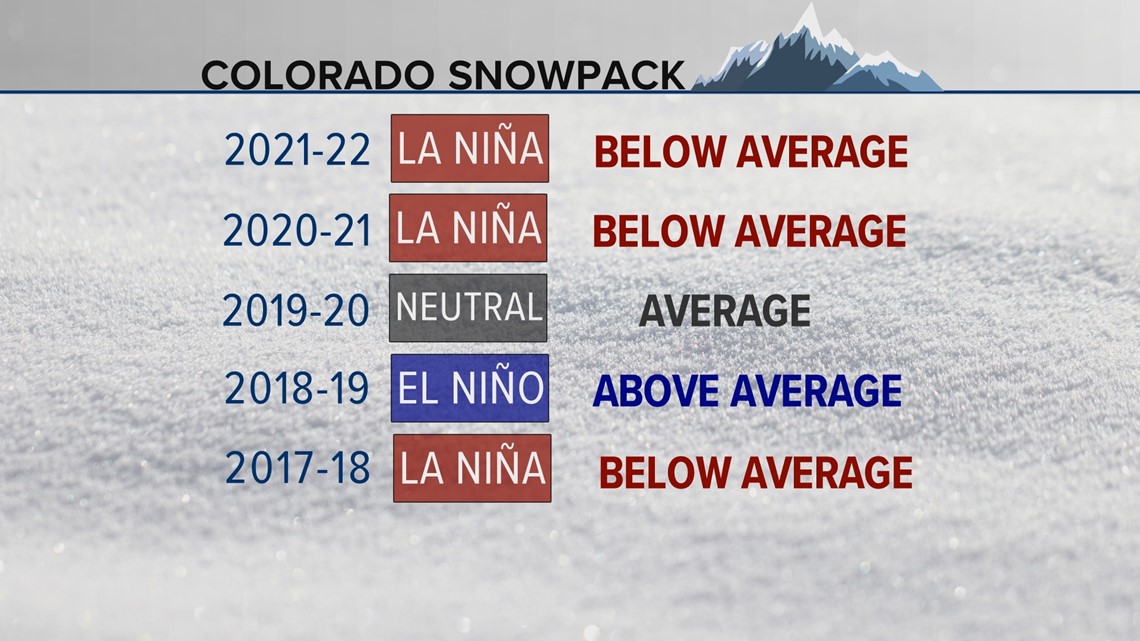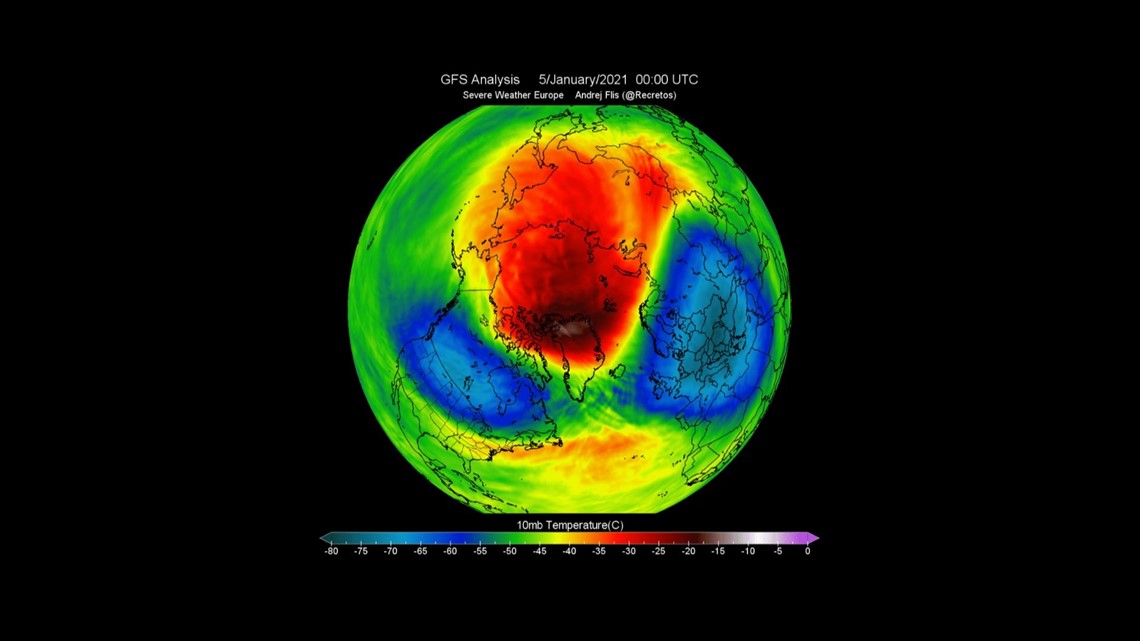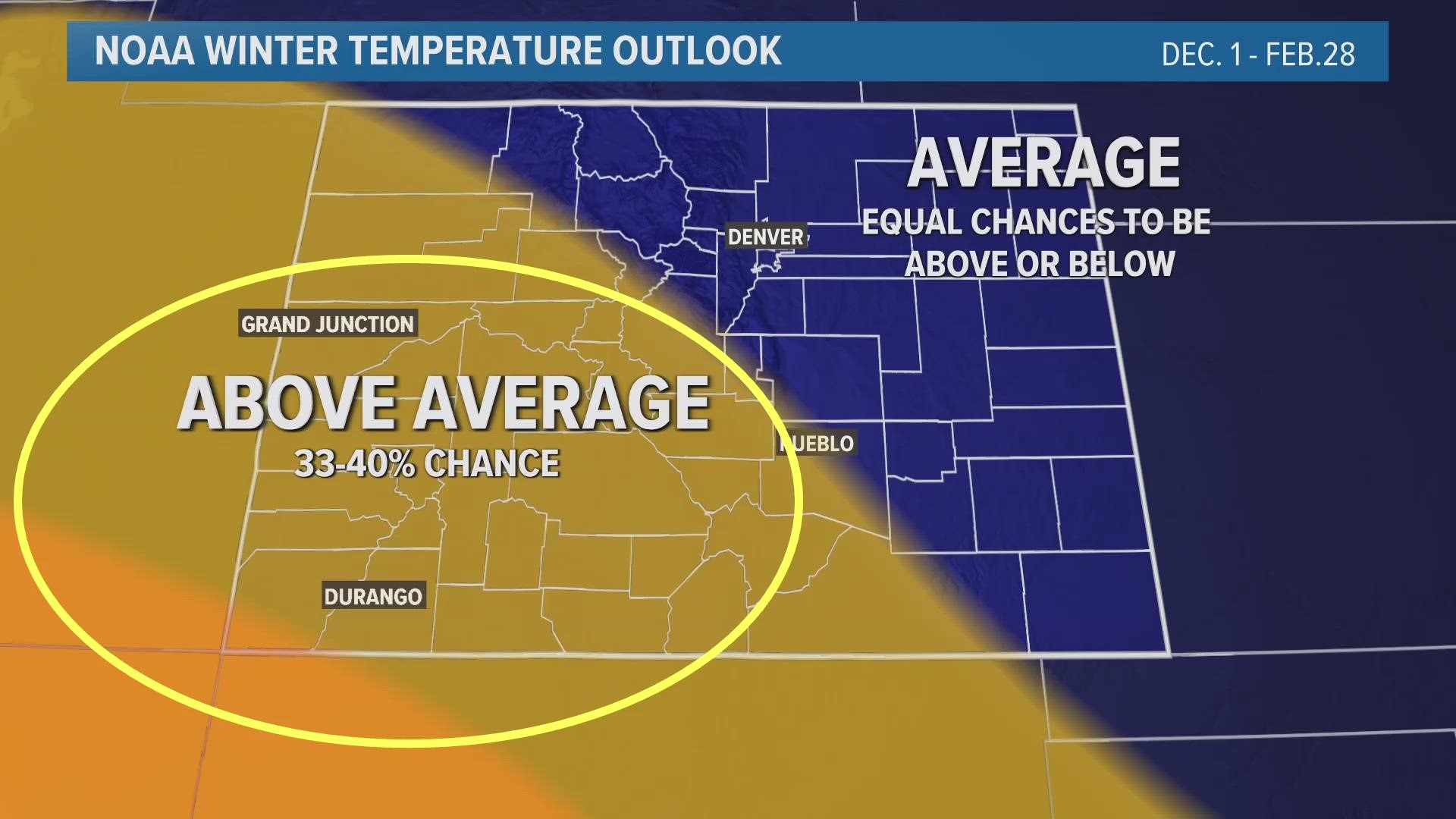COLORADO, USA — If you're new to Colorado, you might not know that March is, on average, the snowiest month of the year for both Denver and much of the eastern part of the state.
March snowfall, though, also tends to be of the boom-or-bust type for the Front Range. The reason our monthly average snowfall is so high in Denver (it's about 10 inches) is because we tend to see our biggest snowstorms this time of year. So a 20-inch snowstorm one March can, and does, single-handedly boost monthly average snowfall.
That said, there are some pretty strong signals that this March could lean on the snowy side - and especially on the cold side.
A string of meteorological signals and computer forecast modeling are all pointing nearly unanimously at one thing: March will probably be a snowy and cold month across Colorado.


It's worth noting that the current Climate Prediction Center (CPC) official outlook calls for roughly equal chances of above- or below-average temperatures and precipitation in Colorado during the month of March. But a closer look shows that we're probably in line for a fairly snowy and cold period.
The nerdy stuff
One of the main long-term drivers of global weather patterns is known as the El Niño Southern Oscillation, or ENSO for short. It's whether or not the tropical portions of the world's largest ocean, the Pacific, is running above or below average in terms of sea-surface temperatures.


Prolonged colder-than-average sea-surface temperatures are known as a La Niña, while warmer-than-average sea-surface temperatures are known as an El Niño.
Right now, according to the CPC, we're in a weakening La Niña phase. That means the influence of those cooler-than-average waters is waning.
But perhaps the biggest hint that we could be in for an active March is a negative phase of the Pacific-North American (PNA) teleconnection pattern.
Um, what was that? Let's explain.
A negative PNA pattern usually means that the western U.S. is in for colder and wetter than usual weather, thanks to a stronger jet stream that tends to curve over the western U.S.
We've seen some of our most active weather this winter before or just after a negative PNA pattern (including our late December Front Range snowstorm). The official CPC forecast calls for the negative PNA to continue for at least the start of this month.
The other big hint that we've got some chilly temperatures and snow en route is a recent Sudden Stratospheric Warming (SSW) event near the North Pole.
Um, what?
Let's explain this one as well. Temperatures near the North Pole spiked quickly last month, an event that often creates a chain reaction that results in the Polar Vortex getting dislodged.
In other words, a wave-like reaction is forcing really cold air out of the Arctic - and likely down into the lower 48.


On top of all that, computer forecast models are mostly showing above-average snowfall and colder-than-average temperatures over the next few weeks across most of Colorado.
So what does it all mean?
We're already seeing some hints of this likely colder weather pattern. In the near term, the CPC is bullish that next week (March 8-12) will lean wetter and colder than usual for Colorado and most of the U.S., probably thanks to the recent stratospheric warming event.
Colder-than-usual air seems like a near-lock for most of next week and likely lingers into the week after, based on computer forecast modeling.
Colder air this time of year usually means at least some snow, and we've got a healthy handful of snow chances for both the mountains and the Front Range next week.
That could be all part of what seems to be a busy March - even for March's lofty standards.
SUGGESTED VIDEOS: Colorado Climate

